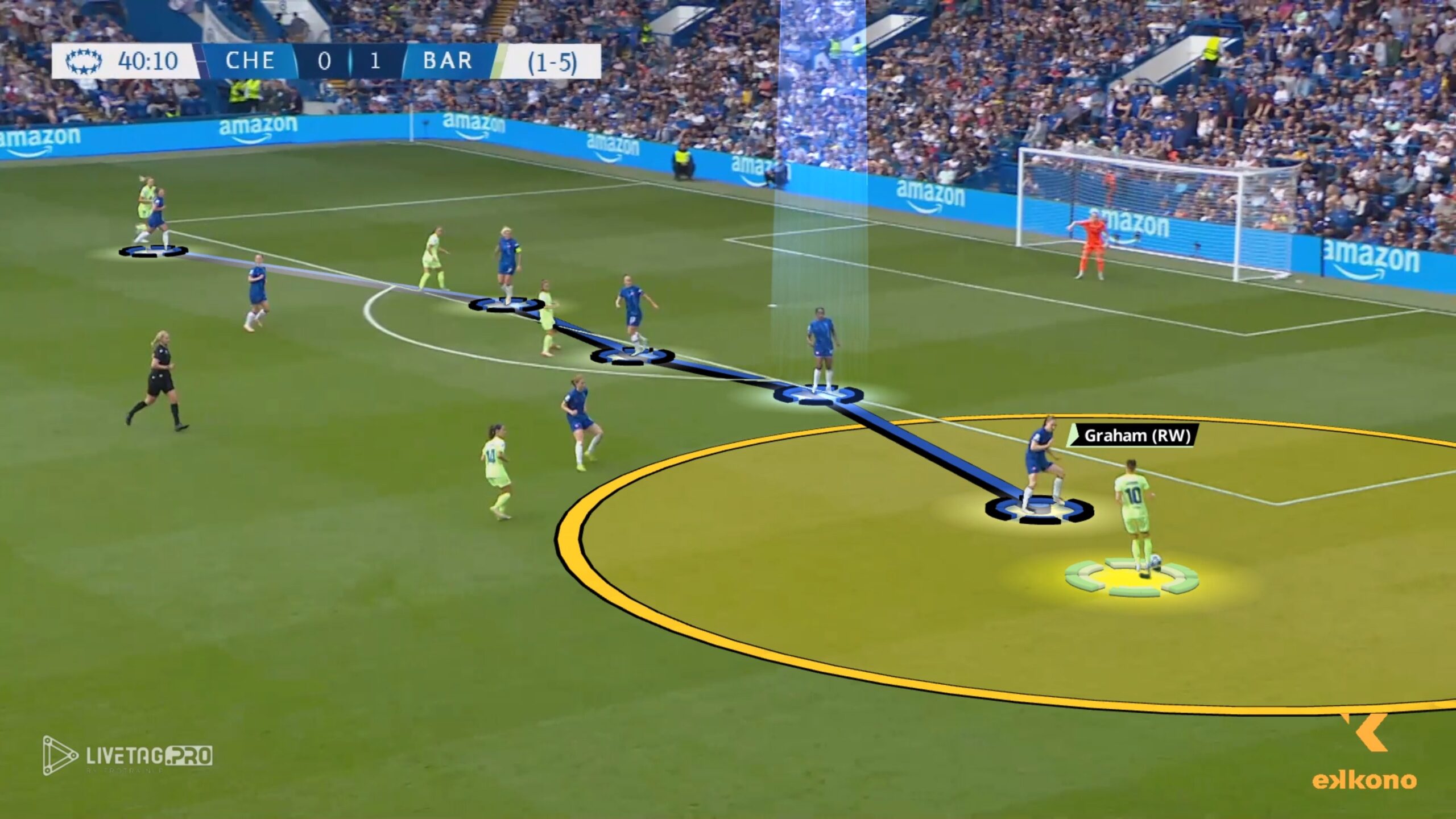
The Ekkono Method Fundamentals for Wingers
In modern football, the role of the winger has evolved into one of the most tactically demanding positions on the field. The Ekkono Method emphasizes a structured approach to developing Individual Fundamentals by Position (IFP). For wingers, offensive fundamentals are not only about technical flair but also about making the right decisions in relation to space, time, and teammates.
As illustrated in the image below, the offensive fundamentals for wingers are broken down into a progressive structure. From scanning and guaranteeing width to timing anticipation sequences, each principle is meant to help the player recognize and exploit advantages during the attacking phase. In this article, we will dive deep into some of the winger offensive fundamentals, taking Caroline Graham Hansen (1995, Norway) and Caitlin Foord (1994, Australia) as examples.

Winger IFP
The Ekkono Method divides the offensive Individual Fundamentals by Position (IFP) in 8 different blocks: perception, width, mobilize the attack, offer support, crosses, attack the box, take profit or generate advantage, and anticipate sequences.
1v1 Situations: Creating and Exploiting Space
One of the key responsibilities of the winger is to attack defenders in isolated 1v1 situations. This requires the player to recognize when they have a spatial advantage and decisively take on their opponent. Once the advantage is gained, the winger must not pause or delay the play, and be vertical attacking the opposing goal. Continuity is crucial as it will allow to progress the attack before defensive cover can recover or reorganize.
Therefore, the winger must not only be technically equipped but also mentally prepared to recognize when the moment to accelerate has arrived. The goal is to unbalance the opposition and break defensive lines by exploiting duels on the flanks.
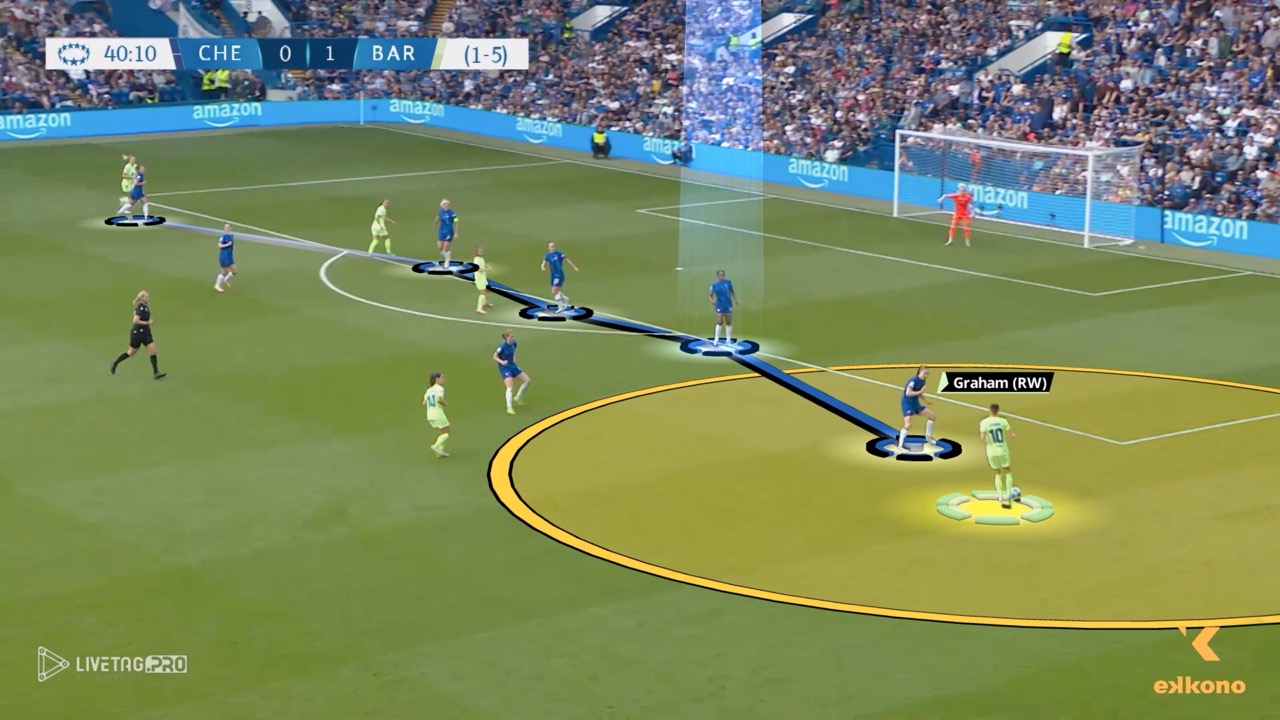
Graham Hansen Dribbling 1vs1
Graham (RW) recognizes that Girma (CB) is too far from N. Charles (LB), creating a clear 1v1 situation. She takes advantage of it, beats her direct opponent, and delivers a precise assist to Pajor (ST).

Caitlin Foord. 1vs1 Ability
Foord (LW) recognizes that Carpenter (RB) has no cover and immediately attacks the 1v1 situation.
Building 2v1 Advantages: Winger Decision-Making in Wide Areas
Beyond individual actions, wingers play a key role in creating collective advantages. A common scenario is attracting the opposing full-back to the ball and then combining with a supporting teammate to generate a 2v1, usually achieved by our full-back overlapping the winger and gaining positional advantage. The success of this interaction depends on timing and positioning, but also on the winger’s decision-making once the advantage is achieved.
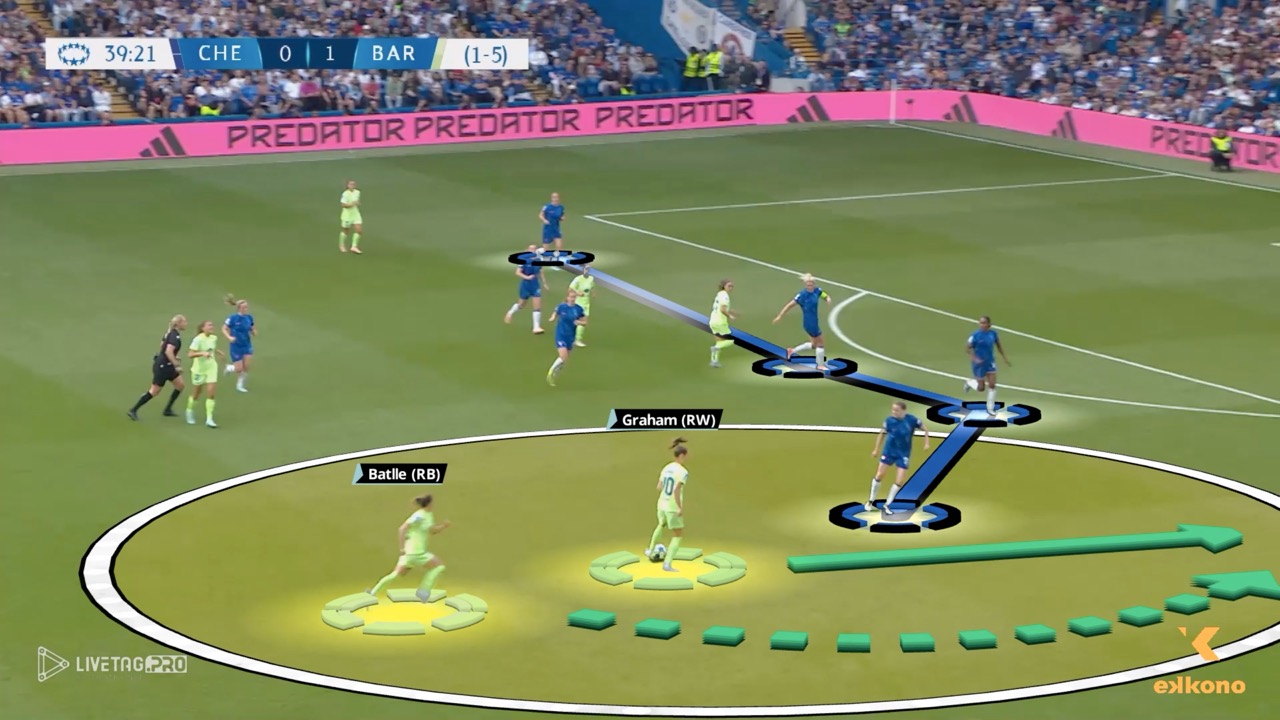
Graham Hansen & Ona Batlle 2vs1
In this example, FC Barcelona Femení creates a 2v1 situation with their winger and full-back. Caroline Graham times her pass perfectly to Ona Batlle, allowing them to bypass their direct opponent.
When to Reset: Recycling the Play and Switching Sides from the Wing
If there is no individual or collective advantage, the winger must guarantee continuity by protecting the ball possession or circulating the ball to switch the play. In these situations, we must teach our wingers to avoid dribbling when they are in a clear numerical inferiority and look for passing options. Eventually, our most talented wingers can try to go for the 1v2 when they are in the final third if their success dribbling rate is quite high, but they must understand that this is not the priority. Understanding when to insist on a side overload or when to reset the attack is an essential part of a winger’s football intelligence.
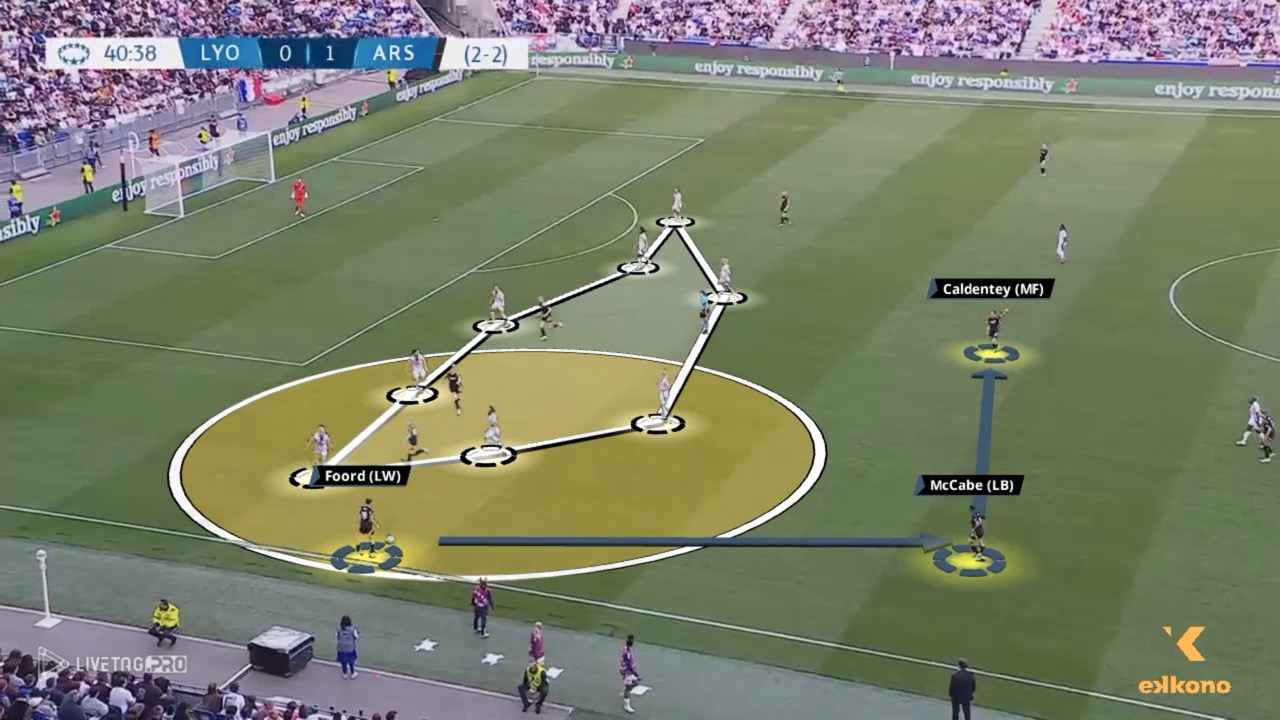
Foord. Recycle the play
Foord (LW) detects there is no numerical superiority or advantage to progress, and plays back so that Arsenal FC can recycle the play through McCabe (LB) and Caldentey (MF).
Recovering Width: Maintaining Positional Balance in Attack
In teams that rely on wide players, maintaining offensive width is a non-negotiable principle. Wingers must understand that once they move into inner corridors—either to finish an action or support the midfield—they must either be replaced in their original zone or themselves reoccupy it to maintain structure.
There are two key scenarios:
-
If a teammate occupies the wide channel after the winger’s movement inside, the winger can remain in the interior to support progression or finishing from a different angle.
-
If no one occupies the wide zone, the winger must quickly return to recover width, especially in a positional attack, ensuring the team does not become overly narrow or predictable.
This ability to adapt to the team’s needs in real time is a defining trait of high-level wingers.
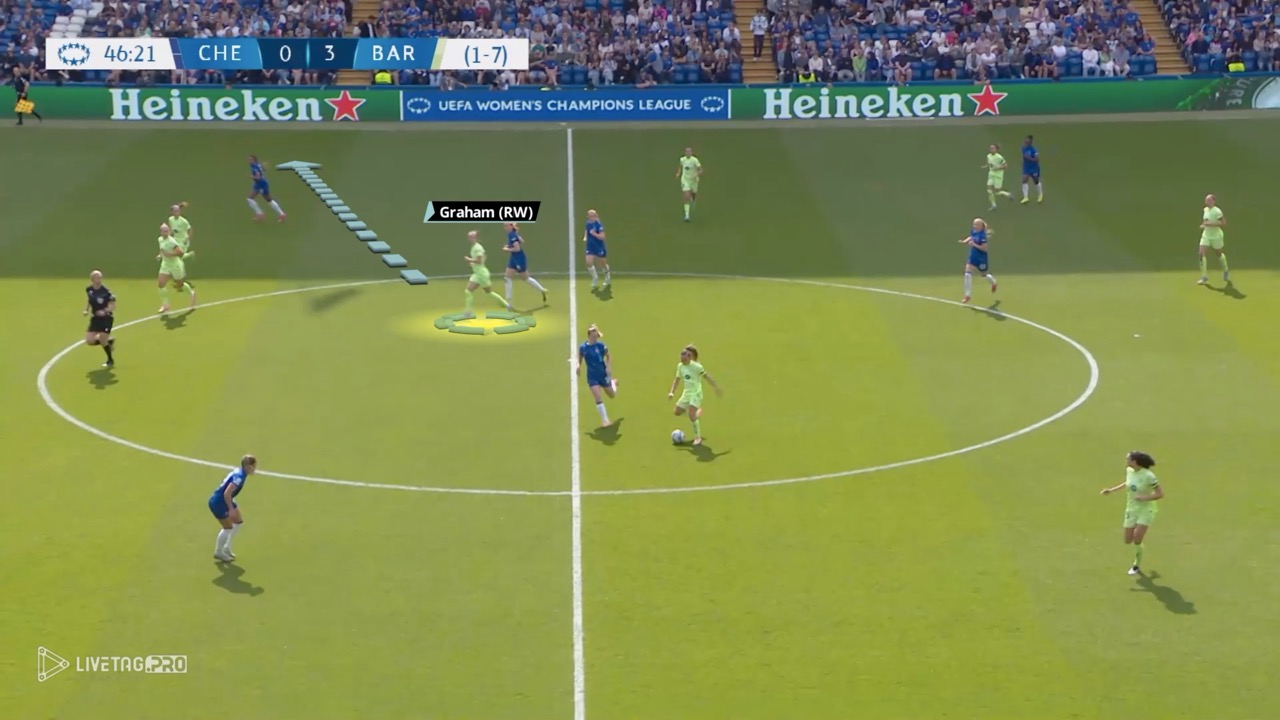
Caroline Graham Hansen. Recover width
After receiving the ball, Graham (RW) dribbles into the inner corridor and combines with a teammate. She then recovers her position on the right flank to ensure FC Barcelona maintains sufficient width in attack.
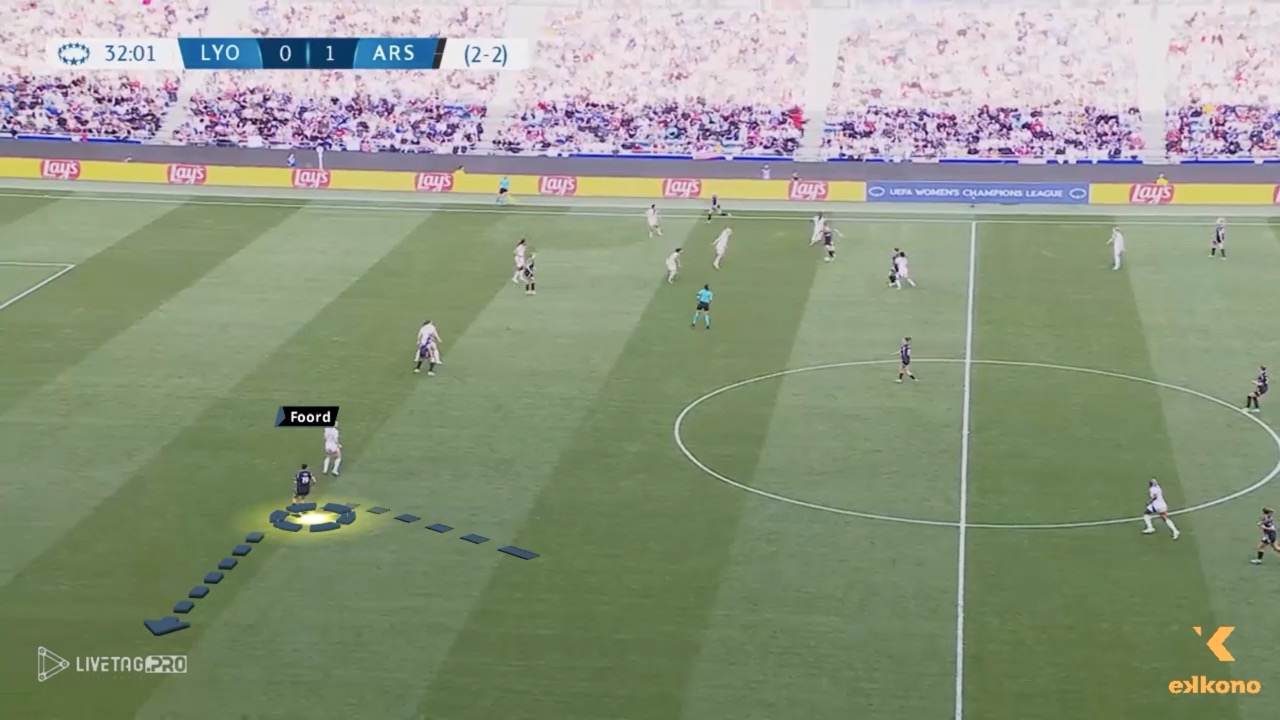
Caitlin Foord. Recover width
After making a run into the inner corridor, Foord (LW) recovers the width as Arsenal FC switches the play to the left flank.
Conclusion
The winger’s role is far more than just dribbling down the line or crossing the ball. It involves a complex set of individual and collective fundamentals that must be understood and trained with intention. The Ekkono Method’s structured framework equips wingers to operate with both creativity and tactical discipline—ensuring that every action on the flank contributes to the team’s collective offensive goals.
Learn the Individual Fundamentals by Position for wingers and other key roles on the field. Join our Advanced Individual Fundamentals II course and take the next step toward becoming an expert coach. 👉 [Check out the course now]

